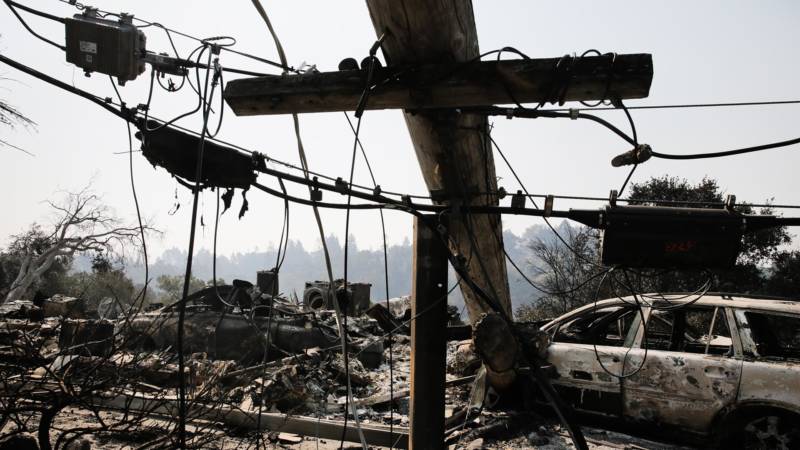After millions of Californians lost electricity last week, state officials are demanding that utilities find ways to reduce the impact of future disruptions. To prevent wildfires and reduce liability, power companies are almost certain to impose blackouts again.
New technology for power lines that make the electric grid “smarter” could help keep the lights on for more customers. Utilities are testing devices that can communicate in real time or can cut power in downed lines before they cause problems. Those investments could ultimately cost billions of dollars.
“We are seeing impacts of climate change,” said UC Berkeley electrical engineering professor Sascha von Meier. She lost power at her Oakland Hills home for about 24 hours during the recent blackout. “But I think there are a lot of technical things we could do more intelligently to minimize the need for this.”
Electrical equipment started 6 of the 10 most destructive fires in California’s history. But power outages hit vulnerable populations the hardest. People who rely on medical devices had to scramble for backup power or find places to stay. Others on tight budgets struggled to replace food that spoiled in their fridge.
Burying Power Lines
Many customers are demanding that PG&E put its power lines underground. Other California utilities and cities are slowly doing that. San Diego Gas & Electric has buried 60 percent of its lines.
In Oakland, the power lines a few blocks from von Meier’s house are also underground. In 1991, a massive fire tore through the hills and burned almost 3,000 homes. PG&E had to rebuild the power grid there from scratch.
“They were going to spend a lot of money anyway, and realizing that this was a particularly hazardous fire area, it was put underground,” von Meier said. The utility has pledged to bury power lines in Paradise, where last year’s record-breaking Camp Fire caused widespread destruction.
PG&E estimates that putting power lines underground costs around $3 million per mile. The utility has 81,000 miles of overhead lines, not to mention 18,000 miles of transmission lines. It costs more to maintain underground lines than those aboveground.
“If and when something does go wrong,” von Meier said, “it’s a lot harder to find where the problem is and go fix it.”

